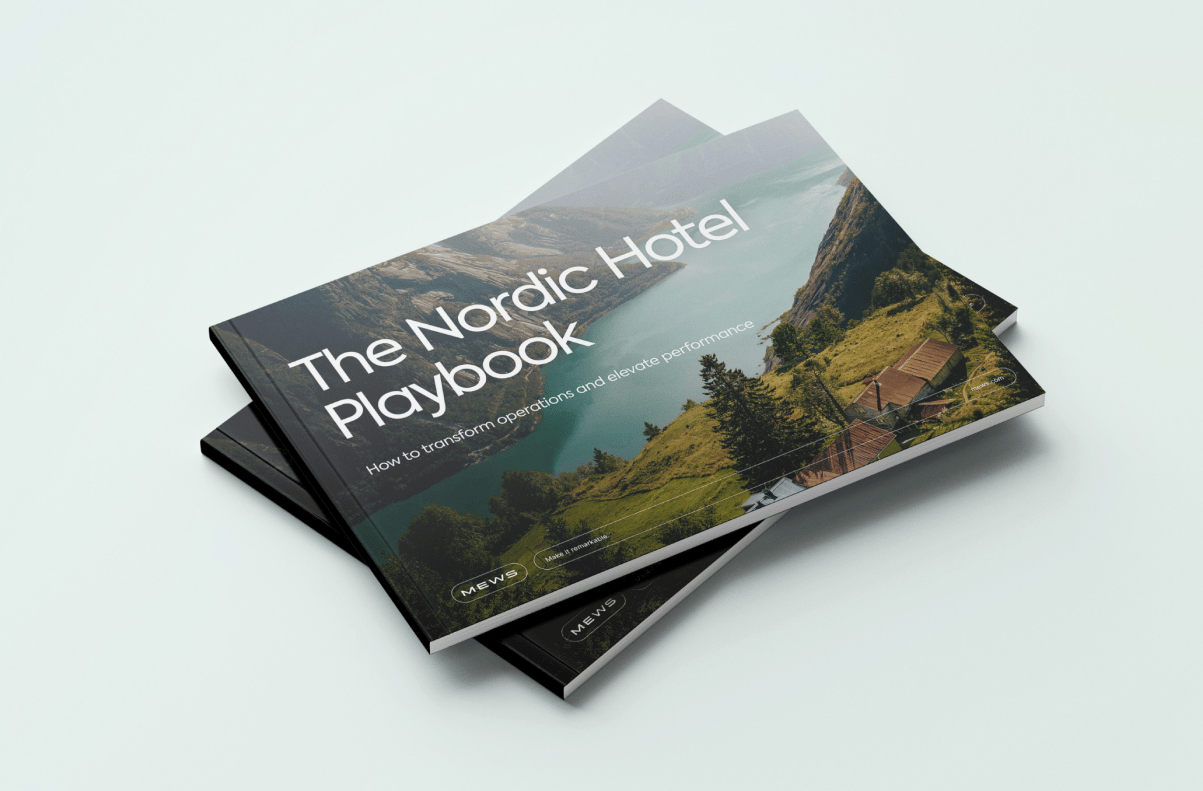Table of contents
The hospitality industry has changed a lot in the last four years. Some of the headline topics include the need for more automation, struggles with staffing issues, changing guest expectations and the rise of the bleisure traveler. You’ve likely been affected by some or all of these areas, and they’re all ultimately reasons to switch property management system (PMS).
Hotels are adapting to new ways of operating, updating existing models to suit these changing demands. As you know, your PMS (or hospitality cloud) is at the heart of everything, so you need to seriously think about if your provider is empowering you and your teams, or if it’s slowing you down.
| Table of contents |
The seven signs it’s time to change your PMS
You know why you’re here – maybe it’s because your team is visibly frustrated in their day-to-day or you know you’re not generating as much revenue as you could be. You’re not alone and we’re here to help. Let’s get into the key reasons to switch PMS.
1. Your current PMS is already holding you back
If your hospitality cloud is holding back your operations, it’s time to change. But how will you know if this is the case at your hotel? It’s easy to fall into workarounds and bad habits, so try to take a step back and think if your processes are as efficient as they could be.
In other words, are you maximizing your revenue for every available space in your hotel (not just rooms), empowering your team, enhancing guest engagement and analyzing data to understand performance and match trends? If not, you’re leaving money on the table and it’s time to switch.
2. You don’t have the features you need
If the previous point was about the bigger picture, now it’s time to get into specifics. Make a checklist of all the operational requirements for your hotel and your team. For instance, your key features might look something like this:
- Cloud-based – safer data, higher security, no downtime, no heavy servers and legacy support maintenance, easier to adapt
- Accessible – you should be able to log into your PMS from anywhere at any time
- Automated – streamline process and empower your team to spend more time with guests
- Intuitive – a system that’s easy to learn is important as a new, younger workforce enters the industry
- Open – the ability to customize your own tech stack with easy (and free) integrations can make all the difference to your operations
3. Training and customer support is slow
Staff turnover in hospitality tends to be high. Training new team members can have a huge impact on precious resources like time, and could take existing staff out of action while they attend to their new colleagues.
Look for a provider that has flexible onboarding options that suit your needs, including online training and support. Systems today can have you up and running in less than a month with video tutorials, online consultations and in-person options depending on the property being onboarded and managed. And if the software is intuitive, it will save buckets of time when training new staff.
4. Your team is frustrated at work
To the above point about hospitality turnover, if you can find great team members it’s imperative that you hold onto them. You need the right configuration of people to make your hotel run smoothly and keep your guests happy. If your employees are complaining about system errors, slow response times, errors and poor support and training, those are red flags not only for staff happiness, but also about the state of your hospitality cloud.
Find a PMS that simplifies tasks, is easy to use, and is transparent and capable of managing multiple functions at your hotel. After all, many people go into hospitality because they enjoy the feeling of helping others. If your system requires your staff to be stuck behind a desk typing in card details and other manual tasks, you’re not enabling them to do what they do best.
5. You struggle to tailor guest experiences
Is your current PMS guest-centric? Has it adapted to the requirements of modern travelers? Above all else, guests now expect the ability to choose and define their own stay. Self-check-in, onsite kiosks, mobile keys, messaging and pre-booking experiences are all elements that improve guest experience and flow.
Hospitality is a competitive industry, and guests are usually willing to research multiple hotels. Put yourself through your own guest journey, from booking to check-out, and uncover any areas where the experience could be better personalized. If anything on your list can’t be actioned with your PMS, it’s time for a change.
6. It’s hard to connect to other hospitality tech
You won’t be able to find a PMS that does everything on its own. Part of your success will come down to choosing the right supporting software, and that requires a well-connected solution.
Hoteliers can now use their PMS to connect to channel managers, revenue management systems, upselling software, F&B tech, analytics and more – all with just a few clicks from within a PMS marketplace. Be sure to try tools for a season, assess the best setup and see whether they work for your needs. The future is configurable modules in an open-source PMS with real-time changes.
7. You’re not excited about the future
You need a PMS that will help to future proof your hotel. If you only pick a provider focused on today’s challenges, you may well end up having to move again in a couple of years.
Think about how you can use them to win the booking, build on ancillary revenue and forecast for the right guest audience. Find a system that will retain your talent and keep guests loyal with the right messaging, experiences, and customization. If they’re always releasing new features and updates, it’s a good sign that they’re adaptable and forward-thinking.
How to switch to a new Property Management Software
Download the guide
When is the best time to change PMS?
Once you’ve decided to change your PMS and have made your business case, the next step is to select the best tech for your needs and the best time to make the change.
Changing your PMS has been compared to open-heart surgery and requires a lot of preparation and care. As such, there’s no one right time and no one-size-fits-all model, but there are ways you can make it as seamless for your team and guests as possible.
Don’t keep putting it off and don’t make a snap decision
It’s easy (and dangerous) to adapt to outdated processes; to kick the PMS can down the road. But as you wait, more and more of your competitors are making the switch to a modern PMS. Meanwhile, your team morale and operations might suffer, and you’ll lose good staff and lose out on profit.
However, don’t go too far in the other direction. A PMS is the heart of your operations, and finding the right one requires a good amount of due diligence. Make a list of the must-have features for your staff or experiences that you want your guests to have; once you have a clear vision of what you want for your property, it’s time to start your research and book some PMS demos.
Do your research or hire a consultant
Talk to similar hotels in the region or properties with similar needs and size. Although your property is unique, referrals are an invaluable resource. Read reviews online (sites like Hotel Tech Report) and check for customer stories with quantifiable success.
Ensure key stakeholders are involved throughout the process, including the demo stage, so you can see what you’ll be working with. If you don’t have the time or prefer the input of a seasoned pro, consultants will be able to do the heavy lifting for you.
Mitigate business impact and reduce downtime
If your current system is outdated, it’s already having a negative impact on your business and operations. Talk to your staff and see if the current system is helping them work smarter not harder. Once you know you’re changing, be open with your team and get buy-in from them. The more invested they are, the faster they’re likely to get up and running on the new system.
When in the calendar year should you switch?
There’s no perfect answer to this question. Changing PMS usually takes around a month but can take up to eight weeks if you choose to go more steadily. When is the quietest one-to-two-month stretch in your calendar? The best time is usually after a busy holiday peak.
Systems today are more advanced and can be upgraded and onboarded while you run your current operations as usual, but it’s still preferable to pick a quiet period so it gives your team more time to get familiar and iron out any issues they have with the platform before your peak season starts.
With a cloud-based marketplace and Open API capabilities, you’ll be able to pick from a range of integration options. If you’re already connected, there will be processes to migrate them to your new system. If you’re yet to try any, you can add and remove integrations gradually as you get used to the new system, so there’s no need to rush here.
In summary
In reading this article, did you spot any reasons to switch Property Management System? It may feel like a lot of work to make the change, but it’s nowhere near as challenging as using a system that’s a decade old and leaving you behind.
If you’re considering changing your PMS, our free guide covers the ten most important questions to ask any provider and goes into more detail about the best time to change.
The Guide to Switching Your PMS
Download the guide
Author
Tom Brown
When Tom isn't creating outstanding marketing content for Mews, he writes fiction for himself. Either way, he only uses the best words.
Hospitality hot takes straight to your inbox
Sign up to our monthly newsletter for industry insights, product news, partner updates and more.

The Nordic Hotel Playbook
Download now

%201203x791%20-%20Latest%20Post-50.webp?width=624&height=555&name=Seven%20signs%20it%E2%80%99s%20time%20to%20change%20your%20Property%20Management%20System%20(PMS)%201203x791%20-%20Latest%20Post-50.webp)
.webp)